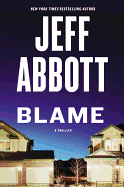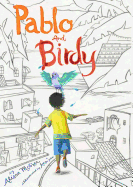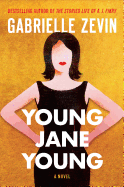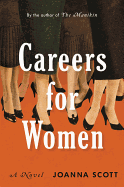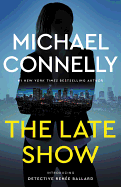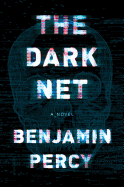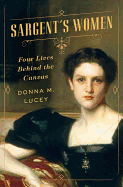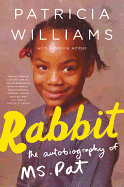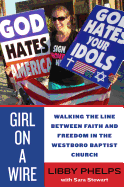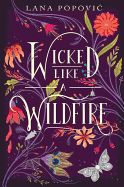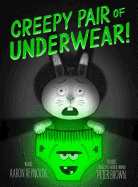Friday, August 25, 2017
 Actor and author Chris Colfer began a coast-to-coast bookstore tour on July 11, the day the sixth and final volume in his The Land of Stories series, Worlds Collide (published by Little, Brown), was released. In Worlds Collide, the fairytale characters (good and bad) have all escaped the Land of Stories and entered our world. Morina, the Wicked Witch of the West, the Queen of Hearts, Captain Hook and a veritable army of literary villains have sinister plans for New York, and only Conner and Alex can save our world and send the characters back to theirs.
Actor and author Chris Colfer began a coast-to-coast bookstore tour on July 11, the day the sixth and final volume in his The Land of Stories series, Worlds Collide (published by Little, Brown), was released. In Worlds Collide, the fairytale characters (good and bad) have all escaped the Land of Stories and entered our world. Morina, the Wicked Witch of the West, the Queen of Hearts, Captain Hook and a veritable army of literary villains have sinister plans for New York, and only Conner and Alex can save our world and send the characters back to theirs.  The highly attended tour events gave Colfer's many young fans the opportunity to interact directly with the author. After he read from the new book, Colfer invited the audience to answer trivia questions about the series--and to turn the questions back on him, attempting to stump the creator. It is a joy to watch the author interact with his audience: he is all smiles and wry humor, ready to give any one of his readers his full attention. Correct or incorrect, stumped or not, Colfer made sure every one of the young participants received a smile, a few moments of direct attention and a hat. He greets every reader as an equal, seeming genuinely to enjoy spending time with them.
The highly attended tour events gave Colfer's many young fans the opportunity to interact directly with the author. After he read from the new book, Colfer invited the audience to answer trivia questions about the series--and to turn the questions back on him, attempting to stump the creator. It is a joy to watch the author interact with his audience: he is all smiles and wry humor, ready to give any one of his readers his full attention. Correct or incorrect, stumped or not, Colfer made sure every one of the young participants received a smile, a few moments of direct attention and a hat. He greets every reader as an equal, seeming genuinely to enjoy spending time with them.
Colfer's Land of Stories series--10 books in total (six series titles, plus four books that exist in the same world)--is now being made into a movie by 20th Century Fox and Shawn Levy's 21 Laps. Colfer will write the script and direct the film. --Siân Gaetano, children's and YA editor, Shelf Awareness
Sour Heart
by Jenny Zhang
Sour Heart is a short story collection by 2016 National Magazine finalist Jenny Zhang (Dear Jenny: We Are All Find). In it, she captures the emotional burdens and challenges faced by Asian immigrant daughters as they struggle to realize their mothers' expectations of the American dream. These interconnected stories are written from an adolescent point of view, with dark humor, longing and unrequited desire.
In one story, a 10-year-old girl lives a surrealistic existence with her down-and-out parents; they scrimp and scam their living in Flushing, N.Y., until their joblessness forces them to give up their child to relatives in Shanghai. In another, a child's silent prayer to God becomes a lonely plea for personal acceptance and understanding. The suffocating need for filial affection builds into a cycle from which the child realizes, with resignation, that history is doomed to repeat itself across successive generations between two continents.
Zhang uses stream-of-consciousness, run-on sentences to convey the uncertainty and fear each daughter faces. These are girls contemplating the burden to succeed, so that they don't cause their families to lose face: "Why did my mother, a grown woman, get to talk like all her hopes and dreams had been shat on, kicked, and set on fire, all the while pushing me, a mere girl, a child, to do better, to accomplish more, to face down all the odds and become a legend? When was I supposed to complain the way they did? To be validated the way they validated each other?"
Zhang's observations are like punches to the heart, raw and intimate in their immediacy. In addressing the universal themes of loneliness, alienation and the yearning for unconditional love, Sour Heart becomes an immigrant American's study in moral courage. --Nancy Powell, freelance writer and technical consultant
Discover: Jenny Zhang's stories examine the emotional burdens and psychological struggles that daughters face in fulfilling their mothers' dreams.
Young Jane Young
by Gabrielle Zevin
In Gabrielle Zevin's (The Storied Life of A.J. Fikry) fourth adult novel, Young Jane Young, more than queasiness abounds when congressional intern Aviva Grossman's affair with her boss, a popular Florida politician, comes to light. Floridians are disgusted. Aviva is slut-shamed. The congressman, however--with loyal wife Embeth by his side--is fine.
Aviva's mother, Rachel, outlines that story in the first of five sections. When her daughter told her that she was in love, Rachel sensed there was more to it than "He's handsome. He's Jewish. I don't want to say too much." After the affair blew open and Aviva became a punch line, Rachel tried to help, but Aviva moved away with no forwarding address. Fifteen years later, Jane Young weighs in. She's an event planner in Allison Springs, Maine, with a precocious daughter, Ruby. After planning the wedding of Franny Lincoln and Wes West, she hears that the despised West may run for mayor, and decides to challenge him. During a mayoral debate, a penny drops for Ruby, and she Googles "Aviva Grossman." Deciding the congressman is her father and despising her mother for her lies, she sets off for Miami to see him.
Young Jane Young is a witty and wise story of three generations of women; in particular, Rachel and Ruby are often laugh-out-loud funny, while Jane/Aviva has a wryer take on their circumstances. Strong and brave, transformed by scandal, they make their way in an often hostile world. In a dream, Jane asks Aviva how she survived. Aviva replies, "I refused to be shamed." --Marilyn Dahl
Discover: After a scandalous affair with a congressman, Aviva Grossman leaves Florida and changes her name and her life. But the past is always lurking.
Careers for Women
by Joanna Scott
Careers for Women is a novel ambitious in scope. Spanning the late 1950s to the present day, Joanna Scott (De Potter's Grand Tour) uses the building of the World Trade Center as a lens through which to examine power, feminism, modernity, progress and the power of dreams to shape a life--or many.
"My dears, it goes without saying that there are advantages to being a woman," says Lee Jaffe, head of the public relations department at the Port Authority of New York. It takes Maggie Gleason some time to recognize these advantages, however, as one of Mrs. J's staff (and narrator of Careers for Women). Nor are said advantages immediately evident to Pauline Moreau, a struggling single mother whom Mrs. J ultimately takes under her wing. This unlikely trio of women stands beside the iconic Twin Towers at the center of Scott's compelling novel. The story spirals into tales of manufacturing and environmentalism, displacement and gentrification, men and women, parents and children, secrets and stories--and life and death.
Careers for Women is as distinctive in its structure as in its detail. Scott varies her writing style across paragraphs, sections and chapters, making the novel read like a series of vignettes. These threads do not follow a linear timeline, but are rather arranged "in accordance with the force of association rather than in obedience to the order of time." This careful approach to an out-of-order storytelling makes it tempting to reread some--or all--of the novel upon completion. One read of this extraordinary and distinctive novel is never going to be enough. --Kerry McHugh, blogger at Entomology of a Bookworm
Discover: Joanna Scott ruminates on feminism, power, progress and modernity in a new and refreshing way in a story of a late 1950s-era public relations department.
Madame Zero
by Sarah Hall
From Sarah Hall--a twice-nominated Man Booker Prize author of five novels, including The Wolf Border--comes Madame Zero, her second collection of short stories. Each piece sings with uncanny poetics. In the opener, "Mrs. Fox," a dumbfounded husband watches with awe and terror as his wife transforms suddenly and without apparent reason into a fox. What follows is a chronicle of his working through both the psychological trauma and logistical nightmare of the situation. In "Theatre 6," an ER doctor at a Christian hospital is assigned a pregnant patient whose life is threatened by her unborn baby. With short, quick lines and precise word choice, Hall captures the speed and hard choices inherent in the doctor's decision to orchestrate an emergency surgery to save the patient's life.
Anyone familiar with Hall's previous work understands how enthralling a collection of her fiction can be. But what might surprise readers--delightfully so--is the range of her imagination and style. Switching between first, second and third person, these stories feature a cast of eclectic voices, each with their own manner of speaking and thinking. Consider the voice of the child psychologist in "Case Study 2: Recognition of the Self." Told from the psychologist's perspective, the story brims with clinical observation: "In the early sessions Christopher was often emotionally void, ignoring me or dismissing the conversation if he did not want to participate." Yet the writing never feels cold; instead, it is riveting. The same could be said for the entire collection. --Amy Brady, freelance writer and editor
Discover: One of Britain's most distinctive young writers delivers a collection of strange, lyrical and unforgettable short stories.
Mystery & Thriller
Blame
by Jeff Abbott
Jeff Abbott (Panic) bundles raw emotions together and lights them on fire in his intense and superbly executed thriller Blame.
Jane Norton is a young college dropout trying to remember details of a car accident in high school that damaged her brain and killed her best friend David. Former friends in the affluent community of Lakehaven, Tex., blame Jane for David's death because of an old note found by investigators indicating her intentions to commit a murder-suicide. Ostracized by her hometown and estranged from her mother, Jane begins questioning and investigating events leading up to the fatal crash as her memory returns in fleeting glimpses. Something about her father's death years earlier doesn't add up, and she becomes determined to find what's beneath Lakehaven's well-to-do façade.
Blame is a cut above the average thriller. Abbott carefully untangles his plot at just the right moments--a feat of pacing and timing--and his prose is stellar throughout. It's tack-sharp and evocative without being overwrought. "Their mutual betrayals lay between them like a stone wall that could almost be seen," Abbott writes of the separation between Jane and a friend-turned-foe. He adroitly twists his characters in the "acid blame" that follows tragedy and turns people against each other. The gossip and finger pointing, the resentments and recriminations, all come undone in a hair-raising finale. Blame is a deft portrait of frailty and suffering, and a riveting thriller that doesn't let up. --Scott Neuffer, writer, poet, editor of trampset
Discover: A recovering amnesiac pieces together the truth of her condition in this smart and insightful thriller.
The Late Show
by Michael Connelly
Though he already has two hit series running with Harry Bosch and Mickey Heller (aka the Lincoln Lawyer), Michael Connelly isn't resting on his laurels. The Late Show introduces a third series protagonist, LAPD Detective Renée Ballard.
After filing a sexual harassment claim against her lieutenant, Ballard is transferred to the night shift, during which she writes up cases. She never gets to close them, though; she has to turn them over to the day shift--until one night when she catches two cases and refuses to let go.
The first involves a prostitute who's been tortured and left for dead in a parking lot. The other is a shootout at a nightclub that leaves five people dead. Ballard fears no one else will care enough to find justice for the prostitute; she keeps working the shootout on her own time because someone from high up seems determined to keep her away from it.
Ballard resembles Harry Bosch in her relentlessness and lone-wolf status--her colleagues won't back up her sexual harassment claims, even though one witnessed the incident in question--but she isn't just Bosch in a woman's suit. Her inner life and behavior are believably from a female point of view, perhaps because Connelly based the character on a detective who consults on his TV series Bosch. The procedural details are solid, while Connelly keeps Ballard's home life intriguingly mysterious, a situation that hopefully will be further explored in future installments. Meanwhile, the author's fans will be happy to meet Ballard and stay up late to finish her Show. --Elyse Dinh-McCrillis, blogger at Pop Culture Nerd
Discover: Michael Connelly introduces LAPD Detective Renée Ballard, who works the night shift and is as relentless as her brother-in-blue Harry Bosch.
The Dark Net
by Benjamin Percy
Benjamin Percy's distinctive brand of horror fiction, honed in novels such as The Dead Lands and Red Moon, is on full display in The Dark Net. It moves at a ruthless pace, introducing seemingly major characters only to have them maimed or killed within a few chapters. The novel begins with 12-year-old Hannah--near blind and rapidly losing her remaining eyesight--being outfitted with the Mirage, "not glasses so much as a silver shield that wrapped your eyes." The miraculous invention allows her to see, but it comes with an unsettling side effect: some people appear "enveloped in shadow, surrounded by a black shawl."
Hannah's aunt Lela is a hard-charging reporter for the Oregonian. She made her name breaking a story about a famous serial killer with occult ties, and she is now investigating a strange new excavation underneath the killer's former building. Her path eventually intersects with that of Mike Juniper, a bear of a man with a complicated past. Mike runs a local homeless shelter that doubles as a base of operations for anti-demonic pursuits.
The Dark Net includes hallmarks of supernatural horror such as demonic possession, hellhounds and something comparable to magic. The ancient forces of evil have embraced hacking and bleeding-edge tech. Their master plan remains a mystery until well into the story, but it involves hijacking human beings as well as computers, security systems, cell phones--the digital infrastructure we've become so reliant on. Insofar as horror is a vehicle for metaphor, The Dark Net warns against our often lackadaisical approach to cybersecurity. More importantly, it's good fun. --Hank Stephenson, bookseller, Flyleaf Books, Chapel Hill, N.C.
Discover: The Dark Net combines aspects of techno-thrillers and horror fiction, bringing demons into the Internet era and pointing out frightening vulnerabilities in our technology-reliant society.
Biography & Memoir
Sargent's Women: Four Lives Behind the Canvas
by Donna M. Lucey
The son of nomadic expatriate Americans on the fringes of high society, John Singer Sargent settled in England in the late 19th century and remarkably cranked out more than 900 portraits and thousands of landscapes. Four of these portraits completed in the 1890s feature American women of great wealth and pedigree. For eight years, historian Donna M. Lucey (Archie and Amélie: Love and Madness in the Gilded Age) researched the letters, journals and archives of these formidable women and their families to flesh out the stories behind their often eccentric and accomplished lives.
Sargent's enigmatic portrait of Elsie Palmer shows a face "steely and cold," yet this daughter of a Colorado mining tycoon lived into her 80s, caring for ailing members of her family. Beautiful young Boston heiress Sally Fairchild wears a translucent veil alluringly hiding her face, but it was her less attractive sister Lucia who went on to some fame. Elizabeth Chanler and her siblings grew up daredevils in a world more "Lord of the Flies than Peter Pan's Neverland."
Sargent's Women concludes with perhaps the most famous of these heiresses, Isabella Stewart Gardner--who was the subject of two Sargent portraits and was his longest and most significant benefactor. She had the money and taste to amass a significant art collection, which now sits in her eponymous museum among Boston's Fens. With thousands of paintings, drawings, sculptures, textiles, ceramics, books, glass, furniture and assorted historical bric-a-brac, her collection was one of a kind. Rather than focusing on Sargent, Lucey wisely concentrates her attention on these women who epitomized their class and times. Sargent only painted them. --Bruce Jacobs founding partner, Watermark Books & Cafe, Wichita, Kan.
Discover: Lucey's carefully researched and illustrated history of four women immortalized in Sargent portraits creates a vivid picture of the Gilded Age.
Rabbit: The Autobiography of Ms. Pat
by Patricia Williams and Jeannine Amber
There are very few laughs in standup comic Patricia Williams's autobiography, but she and co-author Jeannine Amber have crafted an unforgettable and harrowing portrait of growing up in abject poverty in Georgia.
Williams (aka Ms. Pat) and her four siblings were raised by an alcoholic single mother who would vent her anger inside their apartment by shooting her .22 pistol in the air. "Mama fired that pistol the way other parents raise their voice," writes Williams. "Every time she got aggravated, we feared for our lives." Mama's remedy for everything from chicken pox, trench mouth or fleabites was "rub some Vicks on it." At age eight, Williams (nicknamed "Rabbit") was taught to roll drunks for their pocket money. When she was 12, she started dating a 20-year-old married man who got her pregnant a year later. At 15, she was the mother of two and a seventh-grade dropout with only one option for making money: selling crack cocaine on the streets. Calling herself a "part-time entrepreneur," she discovers she has a knack for this dangerous business and is soon making $5,000 to $6,000 a day in profit. But when a Miami drug cartel moves in and starts shooting drug-dealing competitors in the streets, her situation turns deadly.
Williams's account of growing up poor, black and female is hard-edged, gritty and riveting. Readers will be rooting for this spunky survivor every misstep of the way. Her eventual escape from her family's long history of drug addiction, crime and violence is truly inspiring. --Kevin Howell, independent reviewer and marketing consultant
Discover: Standup comedian "Ms. Pat" Williams's memoir of growing up poor, black and female is an unforgettable and riveting story of teenage motherhood, drug dealing and survival.
Girl on a Wire: Walking the Line Between Faith and Freedom in the Westboro Baptist Church
by Libby Phelps and Sara Stewart
Libby Phelps's surname is synonymous with the notorious Kansas Westboro Baptist Church founded by her grandfather Fred. Members' daily demonstrations targeted Gay Pride parades as well as American soldiers' funerals. "I had been picketing since I was eight years old," Libby recalls in her memoir, Girl on a Wire. She wrote it after fleeing her family, their church and the bizarre life she'd lived for her first 25 years.
Individuality was anathema to Westboro--90% of the 70 congregants were members of the Phelps family. Libby suppressed any intellectual curiosity. She adored her grandfather, a self-proclaimed prophet whose message that God hates America for tolerating gays never diminished his role as her loving Gramps in her young mind. Bible study, communal chores and picketing framed the Phelpses' days. Shirkers were scorned. "I was constantly worried I wasn't good enough to be one of God's elect," Libby writes, and she was terrified of eternal damnation. The church encouraged academic success, however, so Libby and her cousins were relativity free during school, and Libby eventually earned a Ph.D. in physical therapy.
Aunt Shirl was Westboro's enforcer, and her lifelong sniping at Libby culminated in an "intervention" staged when Shirl objected to Libby's "indecent" swimsuit. Through a tearful, painful realization afterward, Libby enlisted sympathetic co-workers, packed and fled. "I was walking the tightrope between faith and freedom. It was time to cut the wire."
Privacy was nonexistent at Westboro, so Libby was afraid to keep a journal. Nevertheless, her recollections are clear and detailed, providing insight into an oppressive and hateful community. --Cheryl Krocker McKeon, manager, Book Passage, San Francisco
Discover: This first-person account of life in the notorious Westboro Baptist Church by the founder's granddaughter depicts the group's hateful and insular philosophies.
Children's & Young Adult
Pablo and Birdy
by Alison McGhee, illus. by Ana Juan
It's been almost 10 years since the rare "winds of change" washed Pablo ashore on the island of Isla. Secured in a children's inflatable pool with Birdy, a lavender-colored parrot, clasped tightly to the ropes that moored him, Pablo found safety in the island community. Emmanuel, Pablo's Cuban adoptive father, and the other citizens of Isla have carved out a life for the boy and his pet complete with love, encouragement and imaginative stories about the pair's origin. Every year on the anniversary of Pablo's arrival, they celebrate his birthday, but this year Pablo doesn't want fictional accounts or a made-up birthday. He wants to know the truth about where he came from.
Closely entwined with Pablo's story is the legend of the Seafaring Parrot, a bird that recalls every sound ever made. Emmanuel explains, "I've been hearing about Seafarers my whole life, and I'm a grown man who's never seen one. People have claimed to see them out at sea, but who knows if they're real or not." As the island's forecast looks more and more like the "winds of change" are returning, everyone is talking about finally discovering the elusive bird.
Alison McGhee (Tell Me a Tattoo Story) beautifully weaves Pablo's search for his identity into the myth of the Seafarer, accentuating it with an island of delightfully eccentric critters--the Committee, an eclectic flock of birds brimming with personality; a scraggly stray dog; and of course the humans. The words of her sweet tale mix with brilliant splashes of color in illustrator Ana Juan's striking drawings, and together McGhee and Juan portray how "the winds of change mean fortune lost or fortune gained," even though it isn't "always easy to tell [what's] lost and [what's] gained." --Jen Forbus, freelancer
Discover: An orphaned boy wants nothing more than to know his true identity, but the cost may be higher than he anticipated.
Wicked Like a Wildfire
by Lana Popović
In Wicked Like a Wildfire, Lana Popovic's gorgeous debut, the women of Iris's family are all witches who pass down a dangerous legacy of magic.
Iris remembers that the world of her childhood had been "brilliant and blazing and alive from every angle." Using her gleam, Iris could make the whole world "explode into fractal fireworks." Twin sister Malina's gleam allowed her to harmonize three vocals by herself, creating "the precise pitch of wonder." But when a neighbor witnessed the seven-year-old twins and their mother, Jasmina, producing magic in their backyard, Jasmina put an end to the nighttime practices and forbade the use of magic ever again. That moment set Iris on a course of resentment and spite and, in turn, sparked a terrible, decade-long coldness from Jasmina.
Now 17, Iris feels like a thing apart, a "prickly offshoot" of the charm and beauty her mother and sister share. But when her mother is mysteriously attacked and left in a state somewhere between life and death, Iris knows she and Malina must save Jasmina by untangling the roots of their obscure family tree.
Popovic weaves a "wild and beautiful" tale, a contemporary world so seemingly different from our own that references to a "modern age full of mundane things" seem strangely out of place. The magic is old, going back to pre-Indo-European tribes and one woman who is at the heart of it all: a witch, a god, or both. Yet Iris's struggles with her mother ring true to any age, and the drive to create beauty feels universal. Readers will revel in the evocative language and sensory details that feel a time and place apart, in this first of a planned duology. --Lynn Becker, blogger and host of Book Talk, a monthly online discussion of children's books for SCBWI
Discover: Twins Iris and Malina are forbidden to use their magic, but when their mother is attacked, they must make sense of a deadly curse and the family of witches they never knew they had.
Creepy Pair of Underwear!
by Aaron Reynolds, illus. by Peter Brown
While out shopping for new underpants, Jasper Rabbit is lured by a display for Creepy Underwear: each pair is neon green and exhibits a Frankenstein's Monster-like face. What's not to love? Jasper convinces his mom to skip the tighty-whities and buy him a pair: "I'm not a little bunny anymore. I'm a big rabbit now!" He's excited enough to wear his Creepy Underwear to bed, but darned if their "ghoulish, greenish glow" doesn't start to freak him out.
Jasper tries, but there's no shaking these demon undies. He mails them to China, but the next morning they're in a box (with a pair of chopsticks) on his doorstep. He snips them to shreds, but there they are again, on a hook in his bathroom. It is indeed an "underwear emergency."
Aaron Reynolds will have readers at "underwear," and he'll hold on to them with Creepy Pair of Underwear!'s mix of humor, suspense and starter-level horror. If the story sounds reminiscent of a Twilight Zone episode, that quality is finessed in Peter Brown's cartoony black-and-white illustrations, which have that classic show's ominous gray cast; the stalker-like briefs are the pages' only source of color. But Creepy Pair of Underwear! has a purpose beyond titillation: Jasper, whom readers may know from Creepy Pair of Underwear!'s likewise shiver-inducing predecessor, the Caldecott honoree Creepy Carrots!, is testing the big-kid waters ("A grown rabbit couldn't be terrified of his underpants"). He must ultimately face off--and make peace--with the green menace all by himself. --Nell Beram, freelance writer and YA author
Discover: In this thrilling, chilling tale, a spooky pair of glowing underpants affords young Jasper Rabbit an opportunity to prove that he's no baby bunny.
| Advertisement Meet belle bear! |



